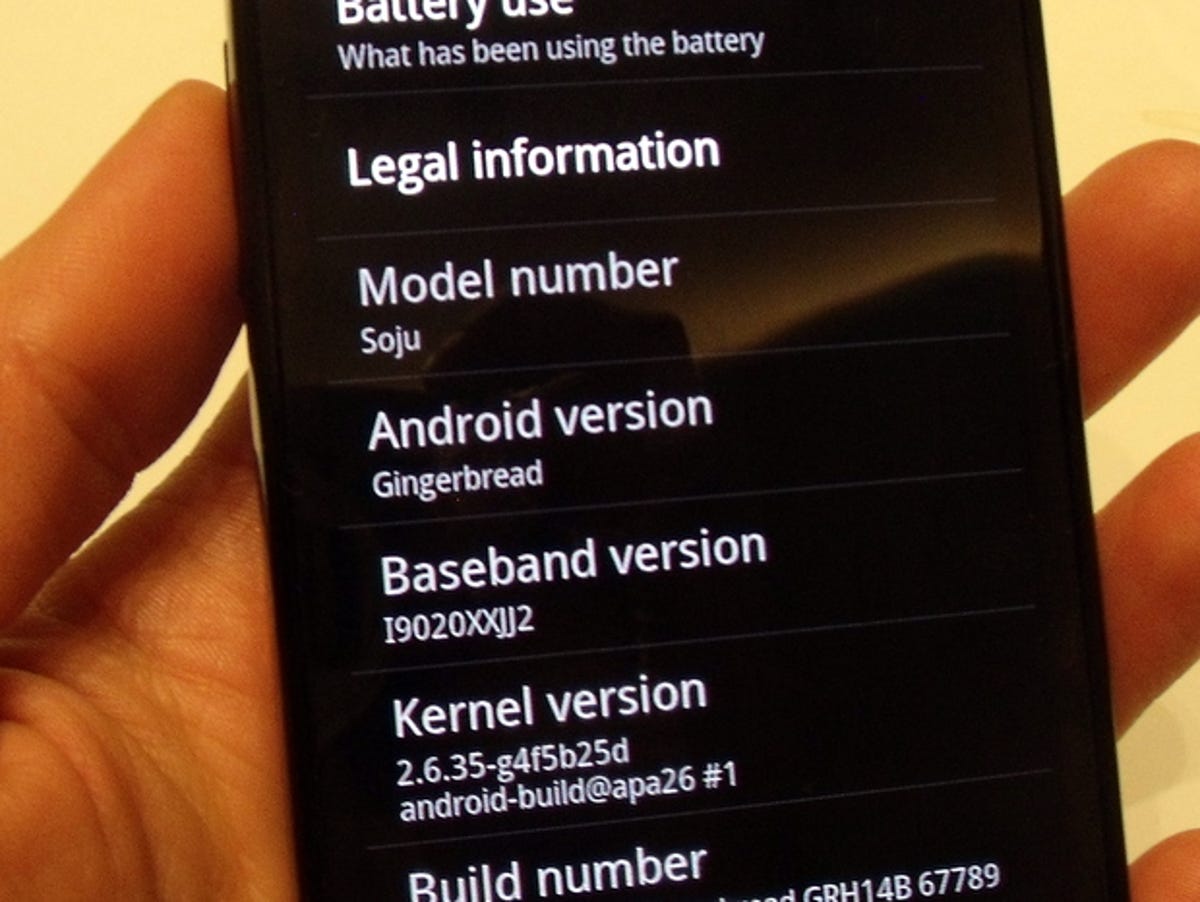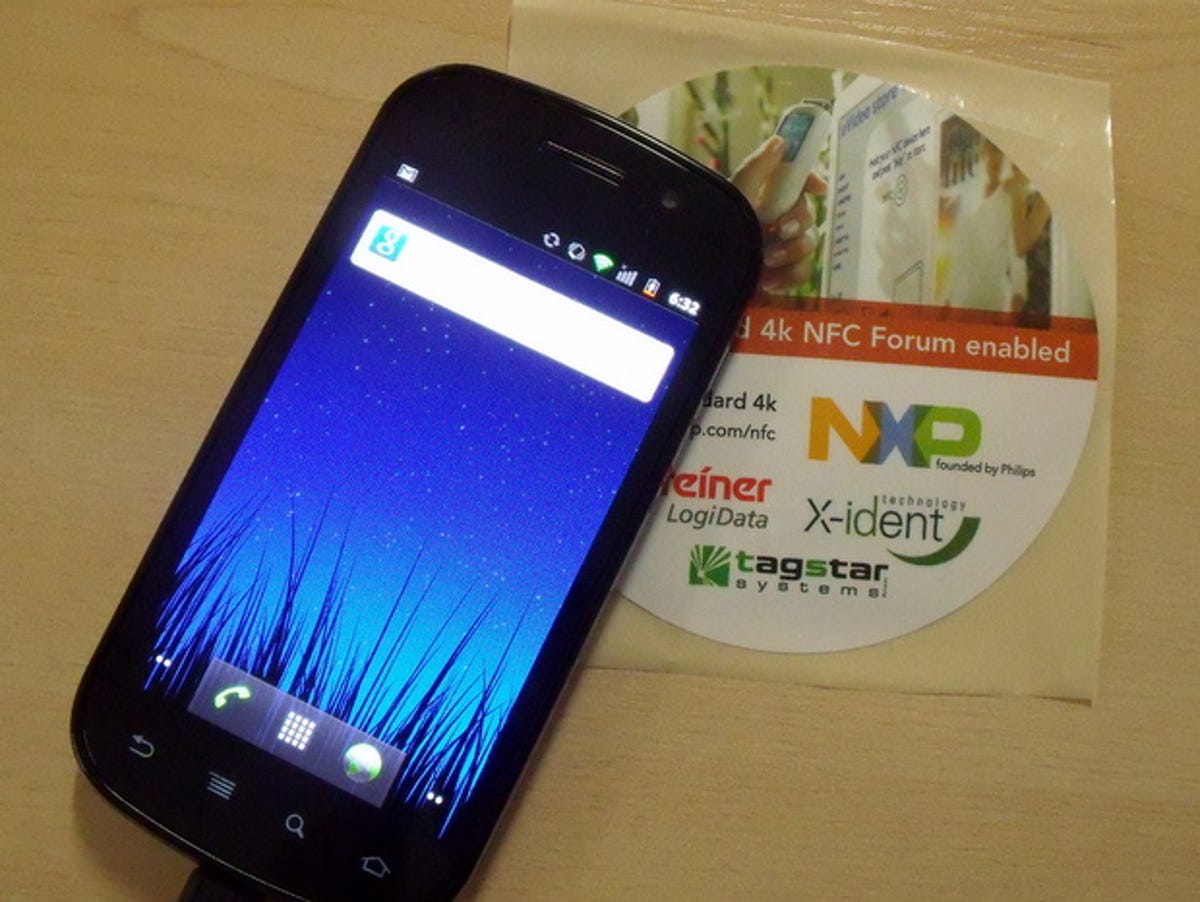
Part of the fun of owning an Android phone is receiving the updates — you
never know what new treats will arrive when one appears on your
phone, like Santa coming down the chimney on Christmas Eve. Android
2.2 Froyo was better than its incremental version number suggested,
since it brought the wonders of Flash Player 10.1 to the Web browser.
Android 2.3 Gingerbread is awash with similarly substantial
additions. But the biggest ones, like NFC and SIP — which we’ll
explain in a second — really just lay the foundation for future developments, and
aren’t much fun at the moment.
But it’s still well worth biting into Gingerbread, if only for the
speed improvements. Need proof? Walk with us, talk with us, as we
explore Gingerbread’s biscuity nooks and crannies. Our model today
is the lovely Google
Nexus S, the first phone to run Gingerbread.
Come over to the dark side


Inspired
by the little green robot logo, Gingerbread is going green.
Two of the three shortcuts at the bottom of the home screen have been
given a touch of colour, with the dial button and browser button both
getting green highlights.
The rest of the user interface has gone over to the dark side, with the
backgrounds of the notification bar and the menu changing from grey to
black.
In the picture below, you can compare the darkness of Gingerbread on the
left
with the lighter look of Android 2.2 Froyo on the right.


Not only does the black background improve contrast, it also increases battery life, according to Google. It makes sense — turning the
lights off uses less power. We’ll let you know how the battery stands
up in our full review, which will replace our preview soon.


Look closely and you’ll also spot the new ‘manage apps’ option in the home-screen menu on the Gingerbread phone. Google says that Gingerbread does a better job of managing apps
that are running at the same time, shutting down the ones that take too
much power when running in the background.
A new tab in the application manager shows every app that’s running,
along with the storage space and memory used by each. Hopefully, we won’t
have to spend much time in there dealing with apps that
have run rampant, but it’s good to have the option. (With the Android
Market being much more open than the the iPhone
App Store, you tend to get more poorly written apps on
Google’s platform.)
Clean out the keyboard
The default Android keyboard has always been one of our favourites,
but
Gingerbread promises to make it even better.
The top row of keys on the on-screen keyboard now includes numbers,
so you can access them quickly with a long press. You can switch to the
keyboard showing all numbers too, as always.


A new treat is that
you can hold down the numbers key at the bottom left of the keyboard with one finger to temporarily switch
to the numbers keyboard — you then type numbers out with your other hand. This two-handed
operation is possible because the keyboard supports multi-touch, like
the BlackBerry
Storm 2.


Android may have had a great keyboard since
the beginning of time,
but it’s always struggled with the intricacies of text editing. Unlike
on the iPhone, there has been no way to zoom in on fiddly text to place the
cursor accurately. That’s why most Android phones come with a trackball, optical trackpad, or a custom software solution, like on the HTC
Desire HD.
Happily, those days look to be over, courtesy of new, one-handed text-editing features. A special gesture opens a cursor mode, so you can
drag a little arrow around to exactly where you want it.
Copying and pasting has arrived, too. You tap and linger on a word to
select it, and you can adjust the selection by dragging arrows to
enclose the text you want. Then you tap the selection to copy the word
to the clipboard.
In our hands-on
with the Nexus S, we found that, like most text-editing functionality on
touchscreens, it takes some practice to learn to use these features.
You have to remember where to tap and what gestures to use, and it’s
still quite fiddly. But practice tends to make perfect with this
kind of interaction, so we won’t judge it too harshly yet.
Save your minutes for your mama


What’s a SIP account and where do I get one?
That’s a question that everyone who buys a Nexus S will have to answer in order to take advantage of Gingerbread’s support for voice calling over the
Internet, enabled by built-in SIP.
Built-in SIP means you won’t have to install Skype, Truphone, Vopium and so on to make a VoIP call, since you can just ring someone straight from
your phone’s address book — in theory. But first, you and the person you want to talk to have to
figure out how to get SIP accounts. It’s not hard — there are plenty
of free SIP account providers already. But it’s definitely something that’s in the realm
of IRC, BitTorrent and other nerdoms.
Also, since Google isn’t selling this service, it told us that it’s
not planning on helping out users by providing info on how to get SIP calls
up and running in the real world.
We weren’t able to test SIP calling during our early hands-on with the
Nexus S, so we can’t tell you how well it works yet. Stay tuned for
more on the true potential of this Gingerbread treat.
I’m down with NFC (yeah, you know me)
Gingerbread supports NFC (near field communication) wireless technology, but that doesn’t mean much for us in the UK.


We hear that NFC is big in Japan. But, in Britain, contactless
technology — found in Oyster cards on the London Underground, for
example — uses RFID instead.
NFC theoretically lets you wave your phone in front of an NFC-enabled emitter to make things happen, whether it’s buy a train ticket or
check out a website. But, until more NFC systems are in place in the UK, this perk
of Gingerbread won’t affect us much.
Everything else


That’s
not all, folks. A new ‘downloads’ app helps you find the files that
you’ve downloaded from websites and emails, such as PDF files. And
there’s support for more than one camera, so phone makers can slap a
front-facing snapper on their gadgets, letting you use them for video calling.
Game developers get a bonus feature too, since Gingerbread supports having a
gyroscope on-board, which should lead to better motion-controlled games
in the Android Market.
Last but not least comes speed. We can’t show it to you in
pictures, but, in our hands-on tests with Gingerbread, we found Android faster than ever. Google has done a bang-up job of increasing Android’s
speed with each iteration, so we’ve got high hopes that Gingerbread will
blow our speedometer into a thousand pieces.
So when do I get it?
Not everyone can grab enough spare change from under their sofa cushions to buy a brand spanking new Nexus S for £550. But, if you have an
Android phone already, the Gingerbread update could come to you for free.
Right now, all Google will say is that Gingerbread will be out
“within weeks”. But, if you’ve got an Android phone that has a
customised skin, courtesy of either the manufacturer or your network, you
may have to wait even longer for the Gingerbread update — or forever. It’s a sad fact that some
phones will never get updated.



